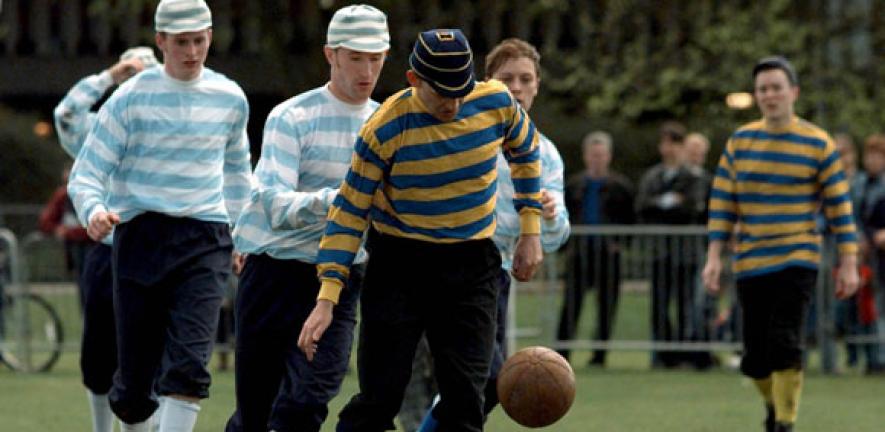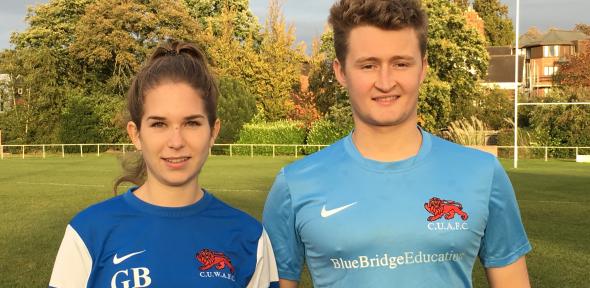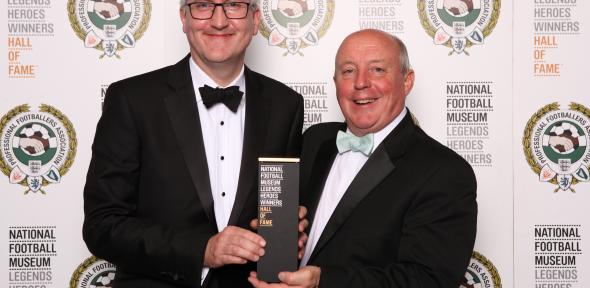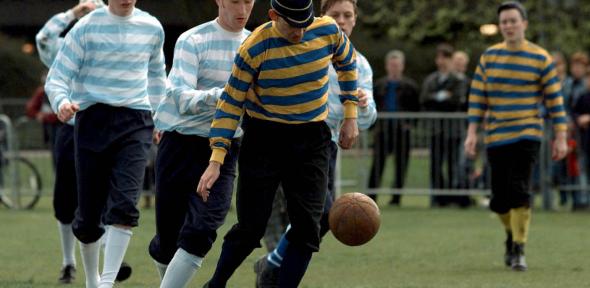
Cambridge University’s 160 year old Football club has been honoured with a special award for its contribution to the history of the beautiful game and its place as “the oldest club in the world”
Cambridge University’s 160 year old Football club has been honoured with a special award for its contribution to the history of the beautiful game and its place as “the oldest club in the world”
“Sport plays a major part in the amazing student experience at Cambridge and this award shows how far back our involvement and passion for football goes."
Nick Brooking, Director of Sport at the University
Cambridge University Association Football Club (CUAFC) will take its place in the National Football Museum Hall of Fame tonight (October 19) alongside England greats like defenders Rio Ferdinand and Rachel Unitt, and goalkeepers David Seaman and Rachel Brown-Finnis.
They will be immortalised next to legends such as Sir Tom Finney, Gordon Banks, Alan Shearer and last year’s inductees Gary Neville and Norman Hunter.
Nick Brooking, Director of Sport at the University said: “Sport plays a major part in the amazing student experience at Cambridge and this award shows how far back our involvement and passion for football goes.
“This is a great honour and it is right that the University football club’s pivotal role in the history of the beautiful game should be recognised in this way.”
The University’s links with the rules of football are said to go all the way back to 1846 when Henry De Winton and John Charles Thring formed a club. In 1848 it’s said they held a meeting in Cambridge, aimed at creating a definitive set of rules for the game of football.
Up until that point, in many parts of the country, football was fairly unrecognisable as a sport, it had no structure and games were unruly, often ending in violence and brawling.
De Winton and Thring eventually established a code and ten simple rules known as the ‘Cambridge rules’ were pinned up on trees along the city’s large public playing fields, Parker’s Piece, where football is still played today.
This code, which included the first articulation of an off-side rule, went on to form the basis for the Football Association rules which established the modern game.
Dr John Little, President of CUAFC, said: “Before the code was produced things were quite chaotic. Players would have to read whatever set of rules had been posted on a tree near to where the game was to be played and decide if they were rules they familiar with before they played. In Cambridge it was decided it would be better if one set of rules was agreed on so that everyone could play against each other.”
With its links said to go back to 1846, the oldest existing document which names the club and the rules, dates back to 1856. So CUAFC can claim to be, unofficially at least, the oldest club in the world which is still playing. Though Sheffield FC (founded 1857), is recognised as the oldest club by the Football Association, CUAFC was awarded an illuminated plaque in 2006 by the FA in honour of its 150th anniversary, giving its foundation date official recognition.
There is no known written record of the original Cambridge Rules but Cambridge holds a collection of some early football memorabilia in its University Library. Perhaps the most significant item held by the library is the revised 1863 edition of The Winter Game by Thring.
This small volume includes Thring's own rules and the very recently published FA and Cambridge Rules of 1863.
Women’s Captain Gerda Bachrati, a veterinary medicine student at Gonville & Caius College, said: “Football has always been a family affair. I started playing when I was seven. When my sister started playing my father began coaching. I have a whole social network built out of it. When I came to Cambridge I wanted to keep that going - it can be quite lonely studying. I think to thrive at Cambridge you need a demanding activity to balance out the demanding academic life. It has made me more organised with my time and given me the chance to be a team leader long before I am expected to do it in my career. The award and recognition - for the Club and University - is amazing, adding to an exciting time for women’s sport at Cambridge"
Men’s captain Henry Warne, a politics student at Fitzwilliam College, said: "Football has been in my family my whole life. It is the main reason I came here - I went to a comprehensive so coming to Cambridge wasn’t something expected. But my uncle always said how getting a rugby blue when he was here and that it had been a great thing in his life. Since I was 15 I have wanted to get a football blue. I have loved Cambridge as a sporting and an academic opportunity."
He added: "To be captain when this is happening is special. I feel very lucky to be part of a club which such a long history and pivotal role and it is wonderful to have the external recognition of this great club.”
Both Bachrati and Warne agree that playing sports as a student has enriched their lives at Cambridge. "The sacrifice for football is great but sport in study helps not hinders. It motivates me to work hard.” said Warne, adding that around half of the squad last year got firsts in their studies.
The Varsity football match between the association football clubs of Cambridge University and Oxford University is one of the oldest regular fixtures in world football, having been played every year since 1873 (with breaks for the two World Wars).
The first Varsity match ended in a 1-0 victory for Oxford, with England international Robert Vidal scoring the only goal. The match is traditionally played at a neutral venue and was first played at Wembley in 1953.
More information
Sport at the University of Cambridge:
Cambridge University is recognised as much for its illustrious sporting tradition as it is for its excellence in education and research.
The Sports Service is the hub for all sport at the University, working with the clubs, maintaining an array of facilities across the city and offering everyone the chance to enjoy sport during their time in Cambridge. In addition to this, we work closely with the sporting community of the city at large, and anyone can be a member of our world-class Sports Centre. For more information go to: http://www.sport.cam.ac.uk/
For more on the CUAFC go to: www.facebook.com/CambridgeUniversityAFC/.
National Football Museum
The National Football Museum was established and its collection acquired thanks to £9.3m investment by the Heritage Lottery Fund.
The National Football Museum is a registered charity overseen by a board of trustees, and also counts notable names amongst its honorary positions, including Museum President Sir Bobby Charlton, Museum Vice Presidents Sir Alex Ferguson, Sir Trevor Brooking and Sir Geoff Hurst, plus Museum Special Ambassador Mark Lawrenson.
The museum also provides a permanent home for its nationally-recognised Hall of Fame, with new legends being inducted in a prestigious awards ceremony every year.
Entrance is free. To enhance the Museum experience, there are some additional exclusive paid-for interactive exhibits ‘Football Plus+’ to help ensure that visitors enjoy one of the best days out in the city.
Opening Times: Monday-Saturday 10am – 5pm
For more on the National Museum Hall of Fame:

The text in this work is licensed under a Creative Commons Attribution 4.0 International License. For image use please see separate credits above.





